Venus is a dazzling beacon in the western sky, setting 3 to 4 hours after the sun. Fainter Mars follows closely behind Venus early in the month, then the two gradually separate as the month wears on. Jupiter, accompanied by the bluish star Spica, is slowly rising during the more convenient evening hours in February. You still have to wait until well after midnight to see Saturn, while Mercury, initially visible low near the east-southeast horizon in the dawn twilight at the start of the month, ultimately succumbs to the fiery glow of the rising sun by the second week of February.
In our skywatching schedule below, remember that when measuring the angular separation between two celestial objects, your clenched fist held at arm’s length measures roughly 10 degrees. Here, we present a schedule that provides some of the best planet-viewing times as well as directions on how to see them.
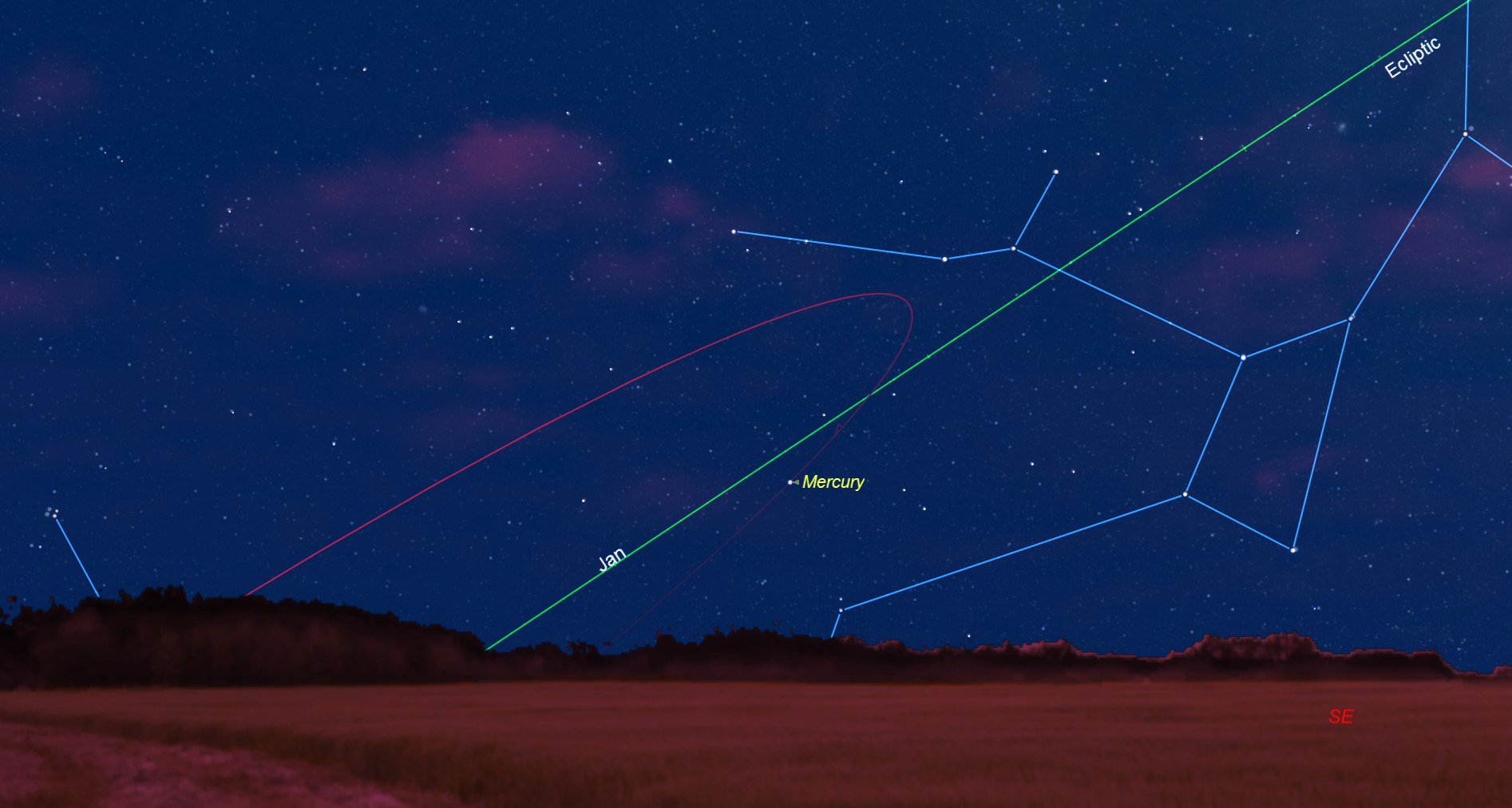
Mercury moves eastward in the sky and closer to the sun every day. It can be spotted near the east-southeast horizon in the middle of twilight — about 45 minutes before sunrise — for the first week of February. In the southern United States, it may remain visible for another week before sinking into the sun’s glare. On March 6, Mercury will be at superior conjunction, meaning it
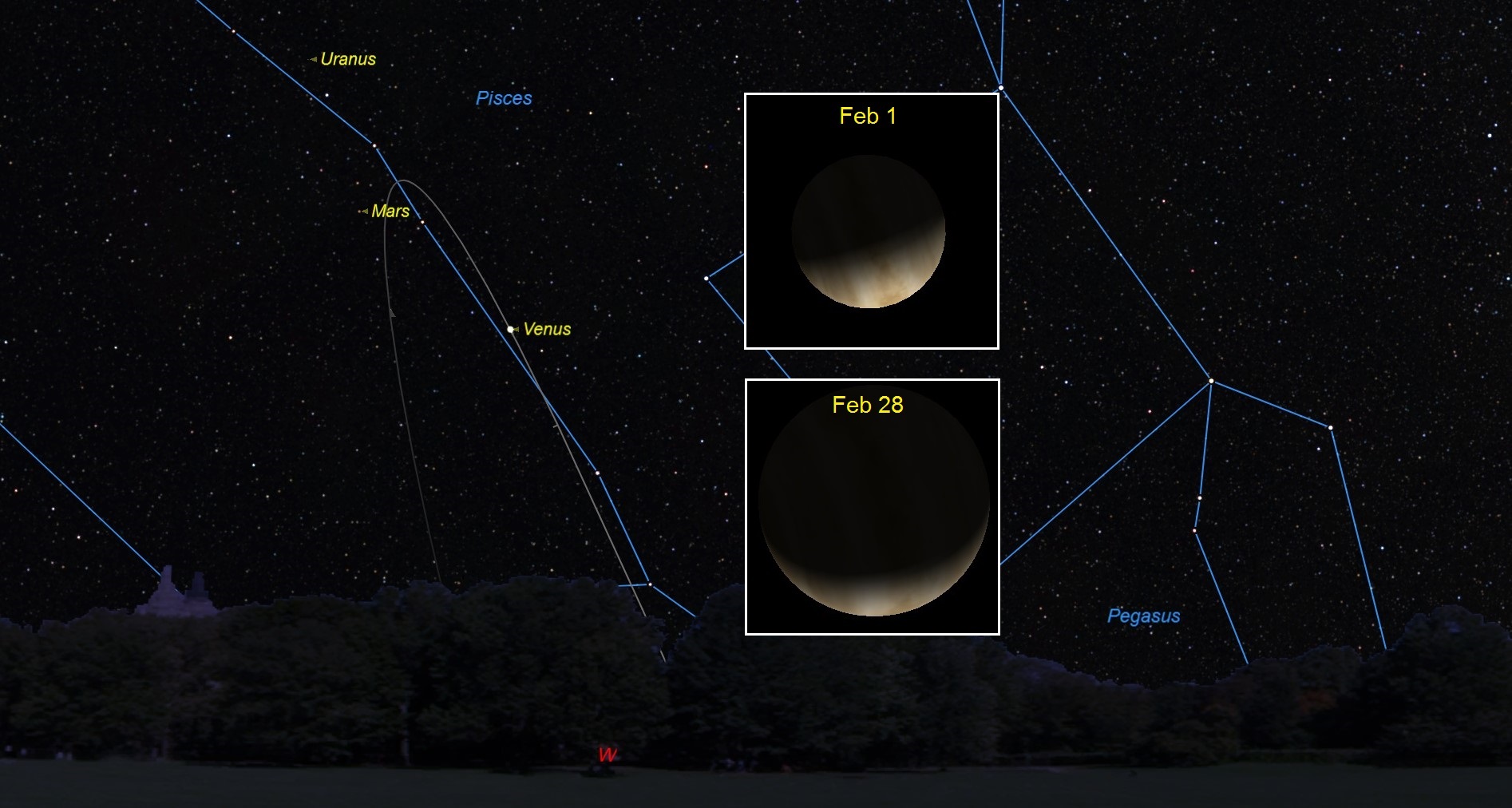
Venus dominates the western sky soon after sunset. The resplendent planet attains a stunning maximum brilliance of magnitude -4.8 in the latter half of February. At a really dark site, can you see your shadow cast by Venus on snow-covered ground (or even on a white sheet). Viewed from midnorthern latitudes, the lamp-like world appears about 40 degrees above the horizon at sundown — almost its highest possible altitude in the sky. But the time between sunset and Venus-set decreases from 4 hours at the beginning of February to 3 hours at the end of the month. Venus’ crescent thins to less than one-quarter lit during February, but lengthens to about 0.75 arcminutes tall — big enough to discern in steadily supported binoculars. As always, your best telescopic views will be before the sky darkens and Venus starts glaring. On Feb. 28, a slender crescent moon passes far to the lower left of Venus.
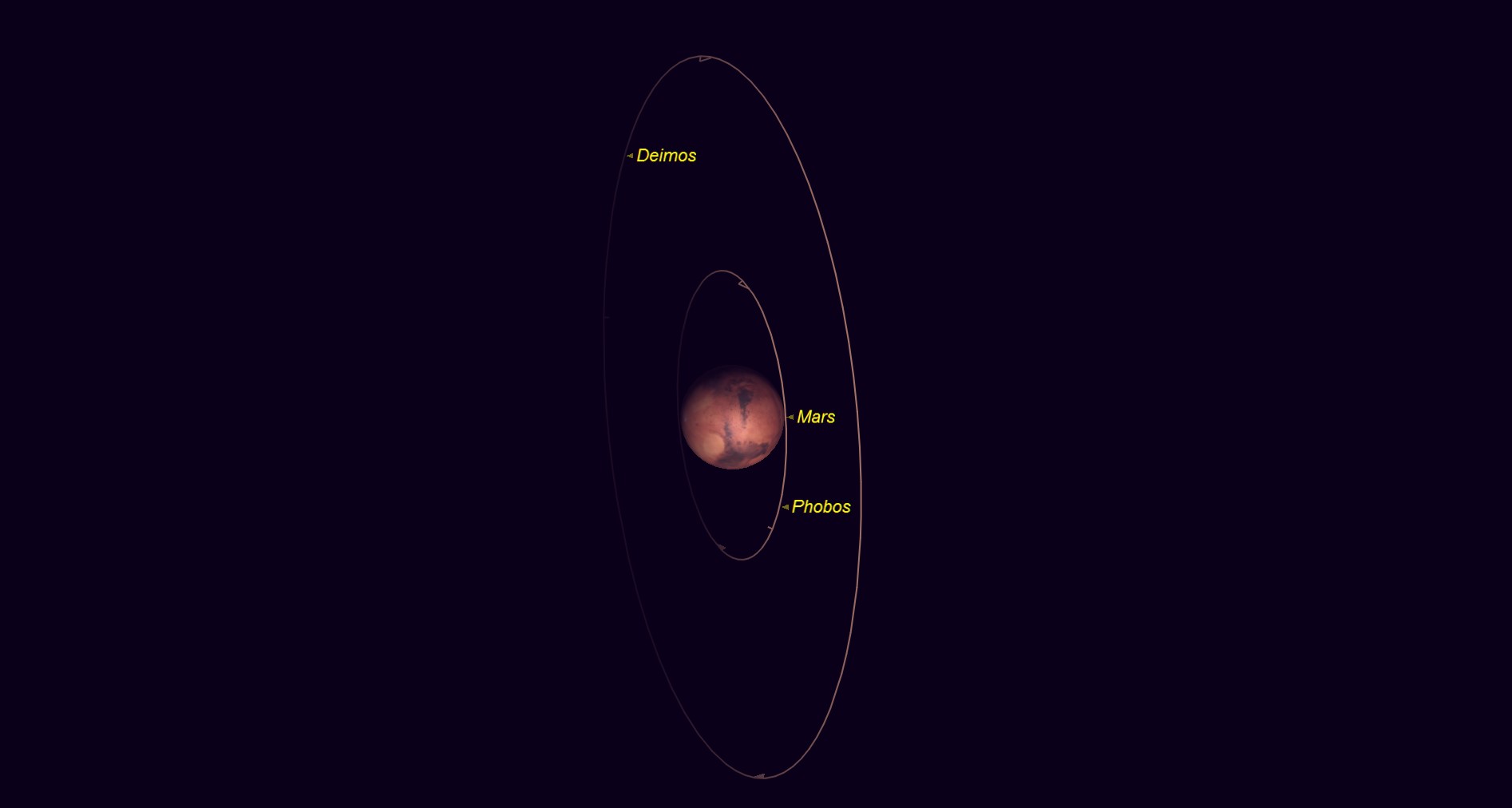
Mars remains 5.5 degrees to the upper left of Venus during the first four days of February. That will be as close as they come to each other before Mars pulls away from Venus to the east. The two planets present some interesting contrasts. The colors of Venus and Mars are sparkling white and ochre-orange, respectively. Mars remains visible against the faint stars of Pisces all month long, setting around 9:25 p.m. local time, and dims from magnitude +1.1 to magnitude +1.3 as it continues to recede from Earth, kicking off this month at a distance of 172 million miles (277 million kilometers) from Earth and moving out to 189 million miles (304 million km) by Feb. 28. You can use Mars to locate Uranus on Feb. 26 using a pair of binoculars. Uranus will appear as a tiny, greenish-blue star 0.6 degrees to the left of Mars. At magnitude +5.9, Uranus glows with only one-seventieth the radiance of Mars.
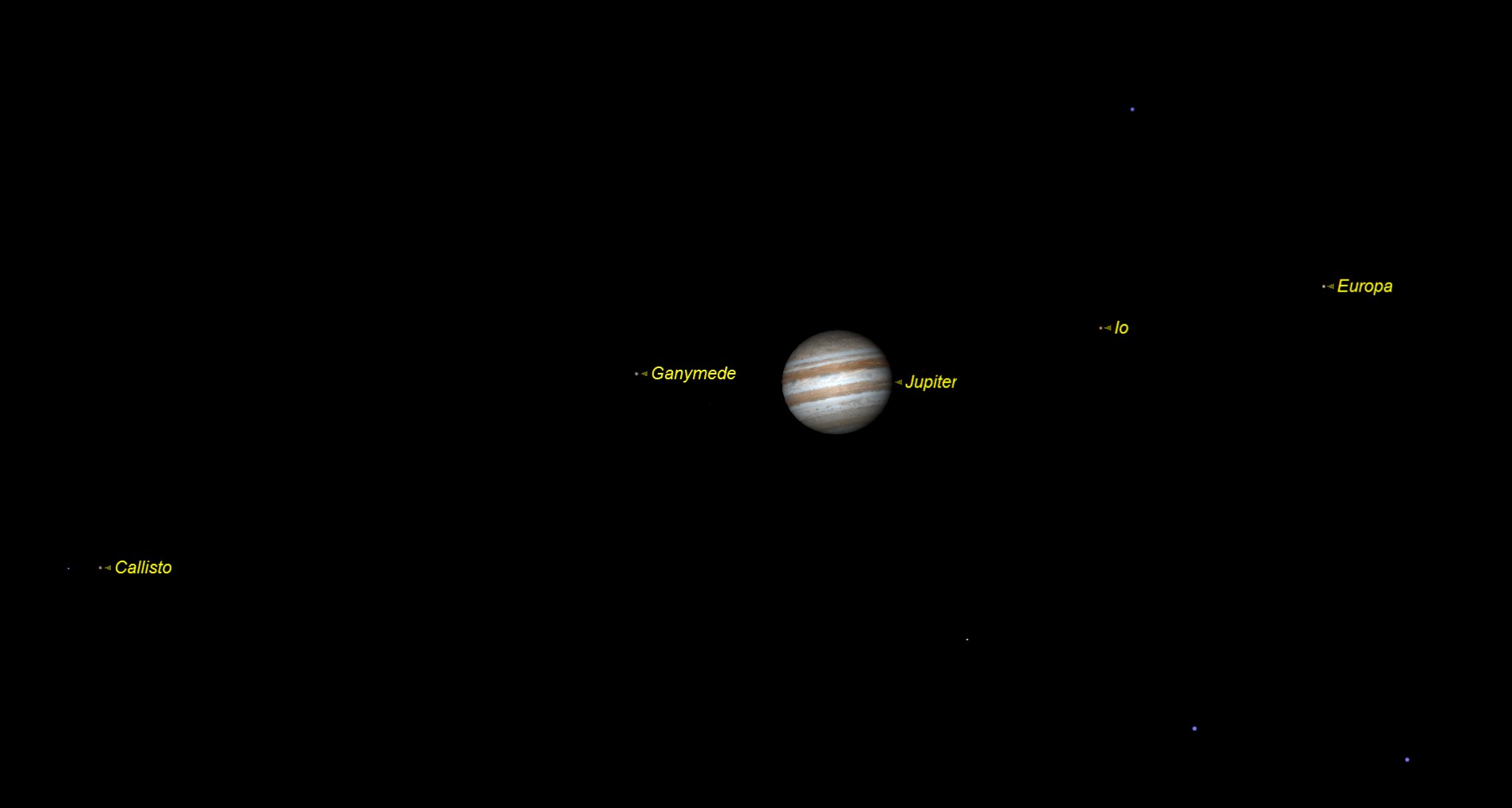
Jupiter rises brilliantly in the east around 11 p.m. local time in early February and will gradually rise earlier each day, coming up at 9 p.m. by month’s end. Once it lifts above the horizon, Jupiter easily outshines Sirius, the brightest star in the night sky, and will brighten from a magnitude of -2.1 to a magnitude of -2.3 during the month. On Monday, Feb. 6, the planet will appear to halt as it begins retrograde (westward) motion relative to the background stars of Virgo. Feb. 23 marks the second of three conjunctions in 2017 of Jupiter with Virgo’s brightest star, Spica; Jupiter will pass 4 degrees to the north of the star. The third and final conjunction in the series will come on Sept. 5. Jupiter doesn’t come to opposition until April, so this means that skywatchers need to stay up late for “Big Jupe” to rise high enough to show a clear image in a telescope. Telescopes can show a bounty of cloud features on Jupiter as well as its four bright moons. This month, the planet’s apparent diameter grows by more than 7 percent as the distance between Jupiter and Earth shrinks. Look toward the east-southeast at 11 p.m. local time on Feb. 14 to see a waning gibbous moon standing high above Jupiter. On the following night, the moon will have moved well to the lower left of Jupiter.
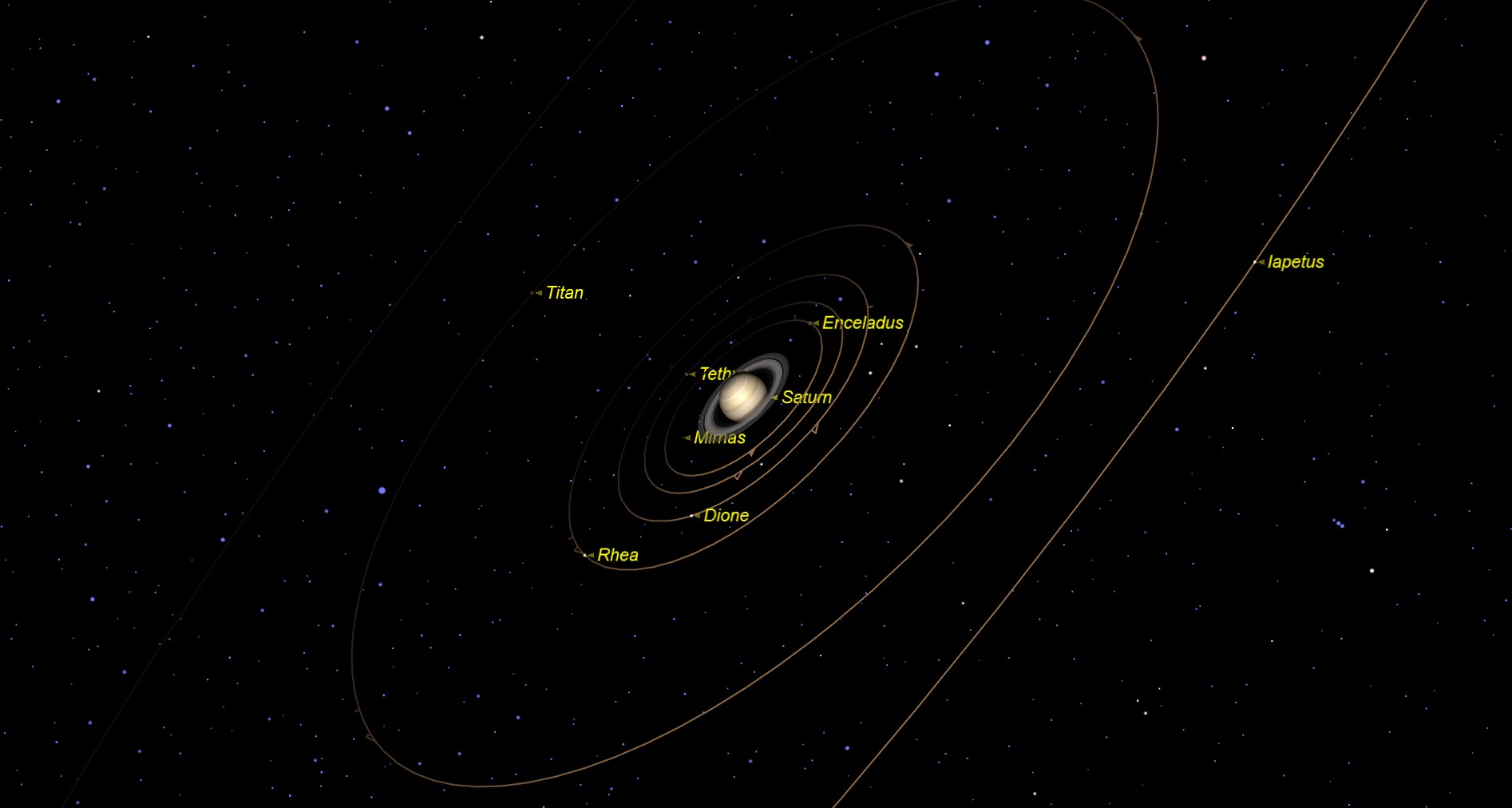
Saturn appears as a yellowish “star” of magnitude +0.6, rising in the early-morning hours around 4 a.m. local time on Feb. 1 and 2:30 a.m. on Feb. 28. The ringed planet starts February in the nonzodiacal constellation of Ophiuchus, but will cross over into Sagittarius on Feb. 24. The waning crescent moon will slide north of Saturn during Feb. 20 to Feb. 21. Facing southeast at 4 a.m. local time on Feb. 20, Saturn can be found to the lower left of the moon. On the following morning, the moon will have shifted to Saturn’s left.













































